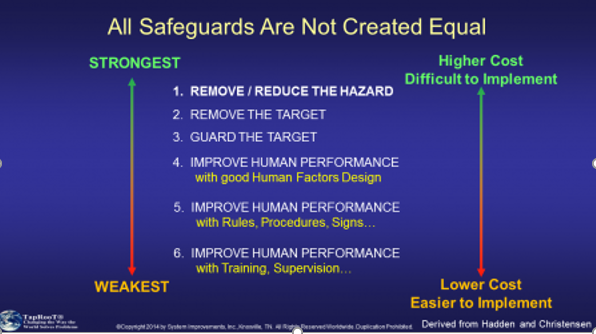Using TapRooT® Safeguard Analysis to Investigate Biopharmaceutical Defects


After Mark Paradies presented a talk on root cause analysis at the 2016 PDA/FDA Joint Regulatory Conference, a question was asked,
“How can we use TapRooT® Root Cause Analysis specifically to help solve “biological” driven problems that occur during biopharmaceutical product processing?”
The group had many general questions during his talk titled, “Identification of True Root Cause – and Impact to the Quality System,” and liked the points that he made. The question above, however, made me wonder why some industries or some industry-specific issues appear more complex than others when it comes to problem-solving.
We use Safeguard Analysis to help identify the factor hazard/safeguards/target during our TapRooT® Root Cause Analysis. We look for errors of loss of control in these factors to find if these changes impacted the big problem that we are investigating. We also look for these changes formally by using a Change Analysis Table, taught in our 5-Day Courses. This Safeguard Analysis article walks you through a near-miss incident with a fast-moving train and people. Once you identify your Hazards, your Targets, and any Safeguards, we ask simple questions such as:
– was there an error that allowed a Hazard that shouldn’t have been there or was larger than it should have been;
– was there an error that allowed a Safeguard to be missing;
– was there an error that allowed a Safeguard to fail;
– was there an error that allowed the Target to get too close to a Hazard; or
– was there an error that allowed the Incident to become worse after it occurred?
So here is the complexity question, what makes a near miss with a train incident different or a biopharmaceutical product processing near miss more complex to investigate than a train incident? Can we use the same root cause process for both types of problems?
Let’s walk through how we can turn the complex into the simple.
Simplifying the Issue:
In safety investigations, either the target got hurt or was almost hurt. If the target got hurt, how badly?
In biopharmaceutical investigations, either it is a True Batch Failure, a False Batch Failure, a Safety Compromised, or a Non-Standard Efficacy issue.
The similarity between seemingly complex productions versus a train incident? Either a hazard got to the Batch (target) knowingly or unknowingly, and was the loss of control caught in time?
The other questions would be….
1. How easy would it be to document the process of transactions that occurred during the Batch Process?
2. How easy would it be to identify the hazards of, say…moisture, catalyst issues, enzyme or bacteria controls for the Batch Process? Simply, did they get the recipe right?
3. Finally, once identified, can the SMEs identify the error opportunities listed above?
If you are in the Biopharmaceutical Industry, whether from the GCP or GMP side, give us a call or just sign up for a course and apply TapRooT® RCA and Safeguard Analysis.



